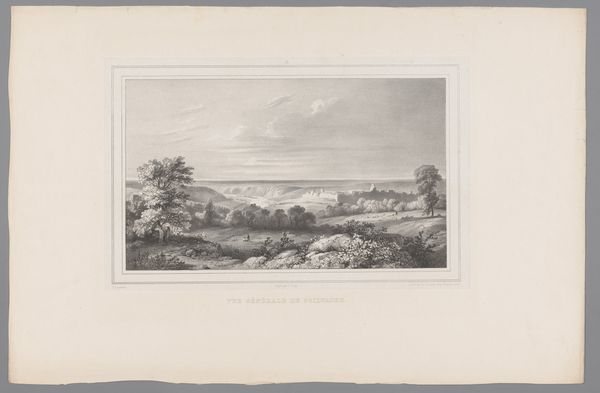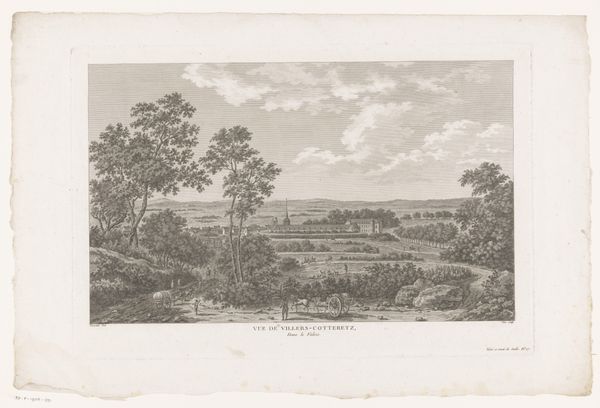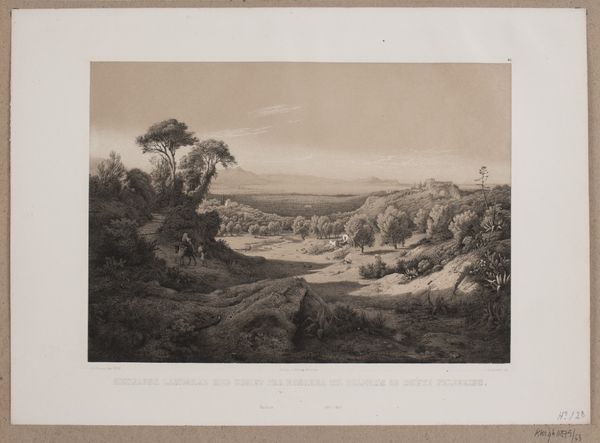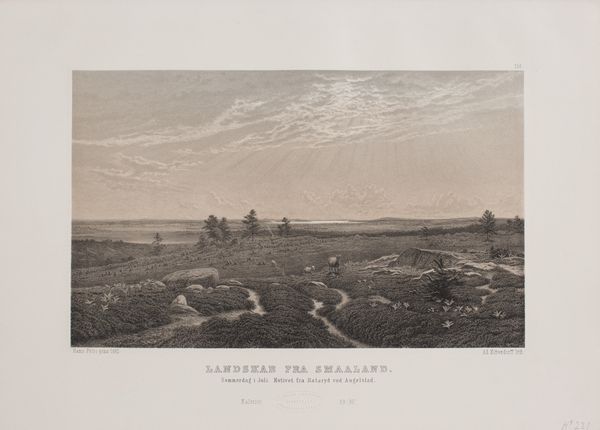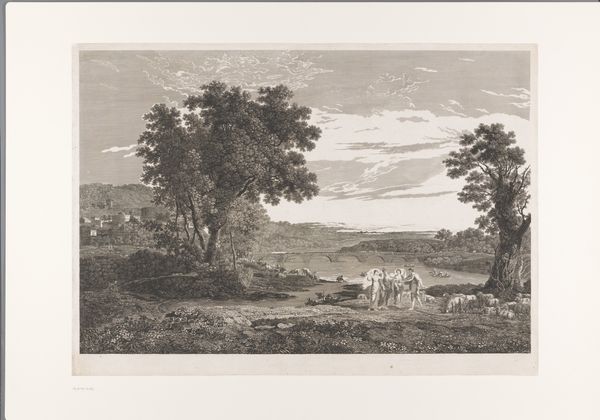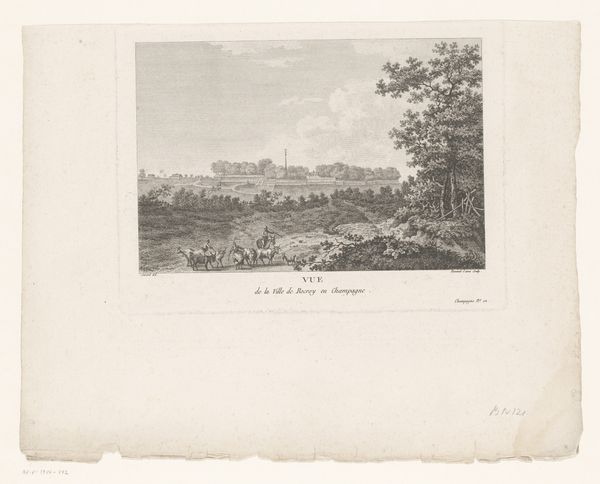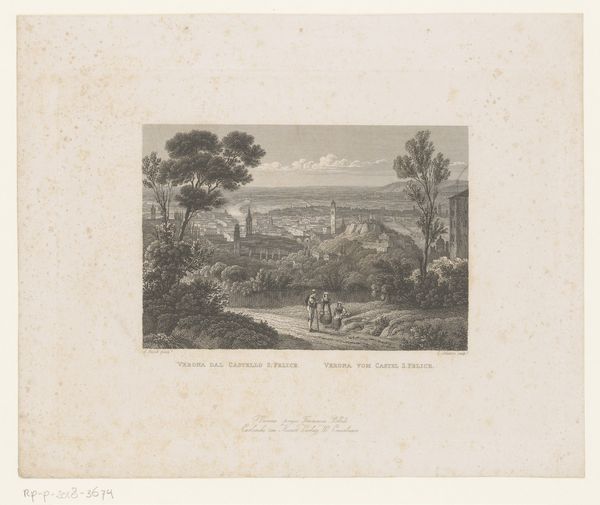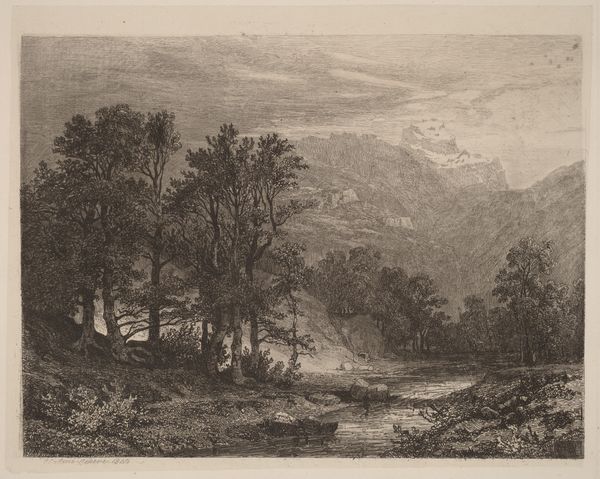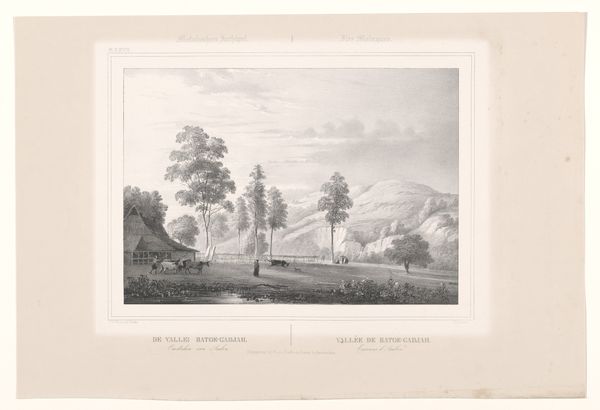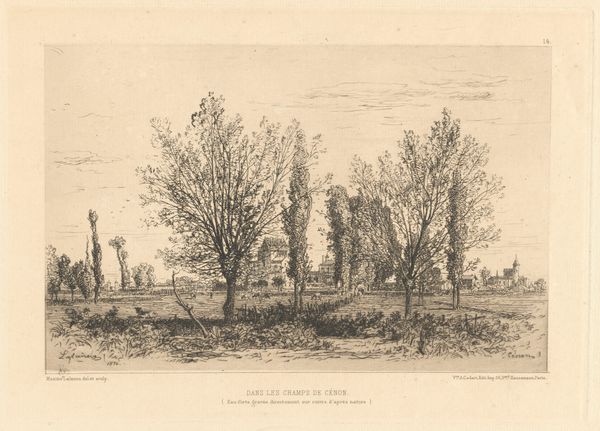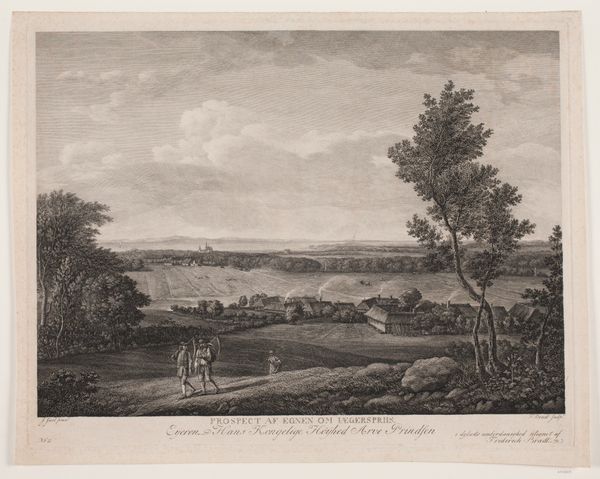
Dimensions: 285 mm (height) x 290 mm (width) (billedmaal)
Curator: Adolph Kittendorff’s “Landskab fra Nordslesvig, egnen om Aabenraa,” created in the 1880s, is a lithograph print, offering a glimpse into a North Schleswig landscape. What's your immediate take? Editor: It feels… contemplative. There's a somber tonality, perhaps inherent in the medium, but the composition contributes too. That dense area of trees at the right frames the softer, almost blurred, landscape in the distance. It gives the work an inward, melancholic pull. Curator: Precisely. The use of lithography allowed for the replication of tonal variations—achieved by applying grease to stone—allowing the image to contain the very depth of feeling you observe. Notice also how the artist balances horizontal expanse and concentrated form. Editor: Speaking of the form, observe the placement of the two figures at the lower right corner. What I find curious is that, seemingly engulfed in that verdant mass of trees, they’re relegated to an almost after-thought area within the broader composition. This draws my eye toward labor represented here. The artist is Danish, but Schleswig was German-speaking, so this artwork raises issues around how land becomes culturally coded and transformed into landscape. Curator: They offer a scale, don't they? Without those figures the vista beyond risks feeling vast. Here, however, their presence is a pivot point that serves the function of anchoring our reading to the material reality: land as lived on and cultivated, transformed by material activities over time, and a physical link with place and labor. Editor: The textures are remarkable, as is the atmospheric depth, achieved entirely without colour. You see that transition in technique between the clearly delineated foreground to the hazier, almost impressionistic, use of material to simulate light? It demonstrates how landscape operates—it’s not purely visual or cognitive but also thoroughly material, mediated by a series of processes to capture not just scenery but also its effects on the senses. Curator: Absolutely. The strategic employment of Romantic-era ideals, coupled with Kittendorff’s mastery of his medium, shapes not only a picturesque landscape but an evocative, sensorial one too. Editor: Indeed, viewing this reminds us of landscape as more than something merely depicted—rather it is materially rendered and shaped by broader historical forces. Curator: A thought-provoking lithograph that exemplifies Romanticism's engagement with landscape. Editor: A reminder that even a print on paper can reveal tangible truths about land and the social realities it inhabits.
Comments
No comments
Be the first to comment and join the conversation on the ultimate creative platform.
